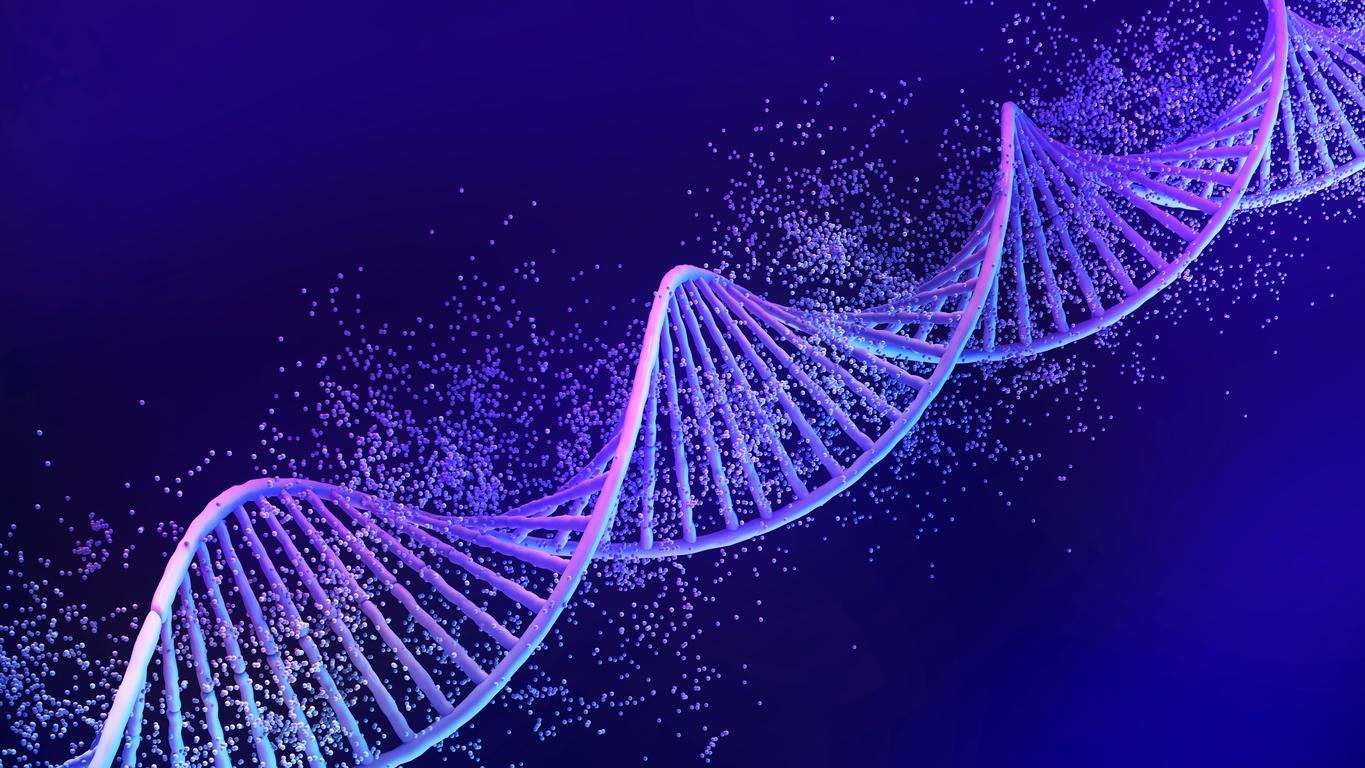Genetic scissors (CRISPR-CAS9): what exactly are we talking about?
Before explaining what “genetic scissors” (CRISPR-CAS9) are, we must take a small detour to DNA.
In each of the cells of our body, there is a long ribbon of DNA which is in the form of a double helix. We find there all the genes that code the characteristics of the individual: his skin color, the color of his hair, the color of his eyes… These genes are coded (as in computer science) with sequences of letters : A, T, G and C.
The genes that make up “DNA ribbon” can now be modified thanks to the famous “DNA scissors” – which is rather called CRISPR-Cas9 in medical language. These microscopic “scissors” combine 2 elements: a strand of RNA, a molecule very close to DNA except that it is a single helix (and not a double one) and an enzyme, CAS-9, which is able to “cut” the DNA ribbon.
“Once in the cell nucleus, the CRISPR-CAS9 complex will search for its target sequence on the DNA, explains theInserm. Once identified, the CAS-9 enzyme will cut the DNA like a molecular scissor.“Researchers can then replace the problematic genes with a healthy copy, or let the cell repair the DNA on its own, this time without error.
“DNA is often illustrated as a sort of ladder with rungs. You have to imagine that the genetic scissors can cut some of these bars, making an incision just before and just after“explained Carine Giovannangeli, researcher at the CNRS and director of the thematic institute Molecular and structural bases of life at Inserm, to our colleagues from Numerama.
Genetic scissors (CRISPR-CAS9): what is it for?
The discovery of CRISPR-CAS9 “genetic scissors” was a real scientific breakthrough, particularly in oncology. Thus, the drug Kymriah® (which uses this “molecular scissors” method) constitutes a major hope in the field of leukemias.
“Before, we tried to correct defective genes by injecting a normal gene. But the defective part was still there and the DNA introduced into the body was going to integrate anywhere, which had even caused cancer. CRISPR makes it possible to introduce this gene in a safe place“explains Carine Giovannangeli.
Used for the first time in 2012, the CRISPR-CAS9 technique has also made it possible to treat 3 people suffering from genetic diseases (the beta thalassemia and the sickle cell disease) according to a study published in June 2020. And clinical trials to treat theLeber’s congenital amaurosis (a rare eye disease) were launched in March 2020.
Genetic scissors (CRISPR-CAS9): what are the limits?
Thanks to genome surgery, it is now possible to inactivate or delete any gene, or even to replace it with another. A technique that raises ethical questions…
Thus, at the Institute of Biomedicine and Health in Guangzhou (China), scientists gave birth to dogs with twice the normal muscle mass. They used the CRISPR-CAS9 tool to suppress myostatin, a gene responsible for limiting tissue growth. And in 2015, an experiment using CRISPR-CAS9 rendered a tiger mosquito sterile, threatening the future of the species.
Of course, the concerns of the CRISPR scissor mainly crystallize on the modification of human embryos – if this practice is prohibited in France, it is not the same in the whole world. In early 2020, a Chinese scientist was sentenced to 3 years in prison for the birth of “CRISPR Babies”: two little girls whose genome has been modified for better resistance to HIV.
IN VIDEO: molecular scissors explained by Inserm
Read also :
Hugs alter babies’ DNA
The health benefit of the gene that makes carrots orange
The genetic adaptation of the python, a key to preventing certain diseases















